The Controversial History of Spoon Bending
Spoon bending, coin bending, and other forms of metal bending are fascinating feats of seemingly paranormal phenomena that have captivated people for decades. While the long and controversial history of spoon bending can be traced back to the 1960s, its mainstream popularity can largely be attributed to one man.
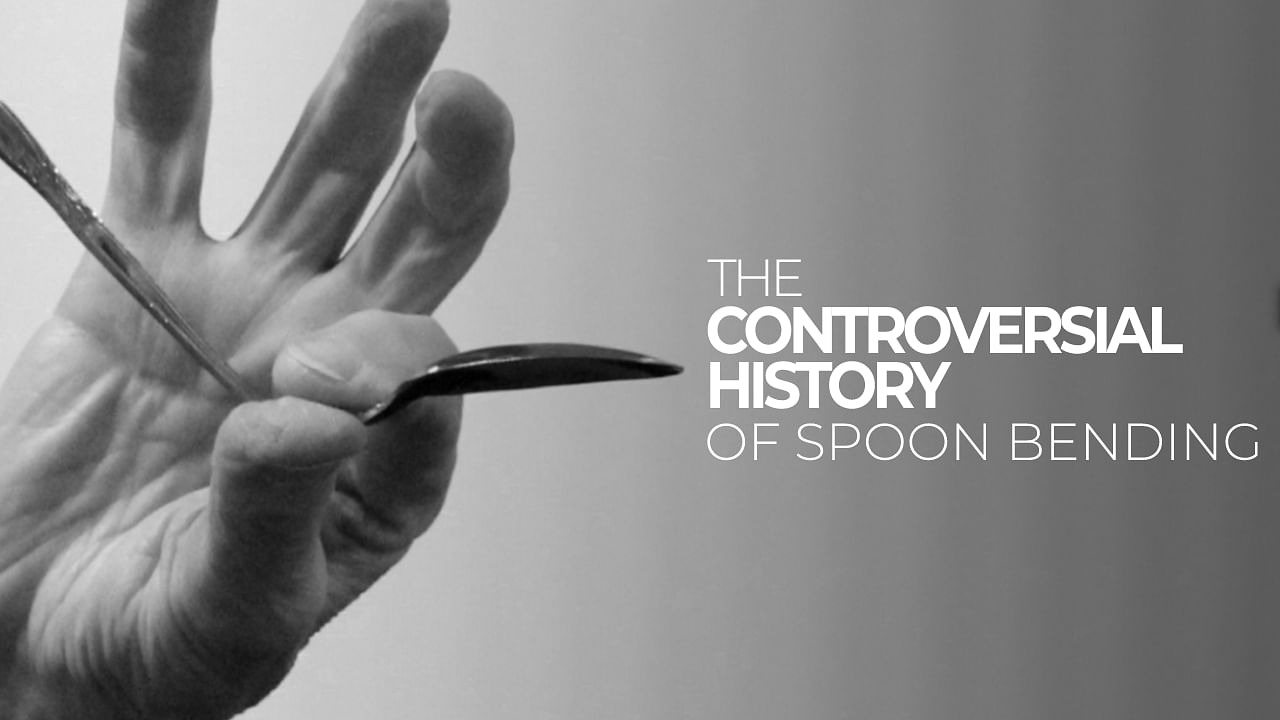
In the early 1970s, a suave and hypnotic young man from Israel began making waves with his claims of supernatural powers. The man was Uri Geller and he would soon become the most famous person associated with bending spoons.
Uri Geller gained worldwide fame for his supposed psychic abilities—particularly psychokinesis, or the ability to bend metal with your mind. His spoon bending performances captured the public imagination and would eventually become the target of relentless skeptics and debunkers. Before we get there though, we must first understand how the simple act of bending a spoon invoked such a cultural transformation.
What Is So Special About Spoon Bending?
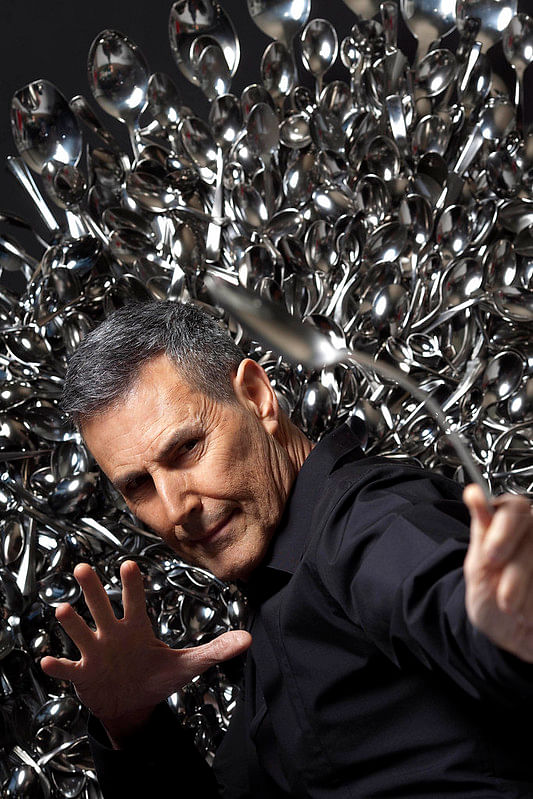
Since Uri Geller popularized spoon-bending, the image of bent metal has been permanently linked to some sort of “mysterious event”. The early, over-the-top reactions to Geller’s psychokinesis performances undoubtedly played a large role in this. Because, no matter how hard you work to learn magic tricks, even the most amazing card magic trick will never get a visceral reaction like Geller's metal bending evoked.
Newspaper headlines, feature articles, mentions in books, and other media discussions also continuously fueled the fire. Despite the fact that there was no actual scientific evidence, the mystical and pseudoscientific underpinnings were enough to keep the spoon-bending train chugging along.
Photo Credit: David Parry/PA Wire
The Parallels Between Levitation and Spoon-Bending
To help understand this, we can examine the one other genre in magic that has a similar ability to affect audiences: levitation.
People have always wanted to know how to make things levitate. As with metal bending, levitation taps into a different part of our psyche than an ordinary magic trick. It asks us to accept the ability to control nature, a belief rooted in ancient myth, legend and religion. Jesus, Enoch and Elijah ascended, gurus float, and man has always wanted to fly—something David Copperfield capitalized on into this with his famous flying illusion.
David Blaine also created a cultural phenomenon by levitating in the streets during his David Blaine Street Magic tv specials. By taking an age-old secret (The Balducci Levitation) away from the traditional confines of a stage (thus removing the potential use of wires for levitating), he was able to create an experience that was so much larger than a magic trick.
Modern magicians and mentalists still have great success with levitations, even if they don’t always invoke the same deep transcendental callings they once did. There is a reason invisible thread and magic loops are used in some of the greatest close up magic tricks of all time like The Haunted Deck or Floating Dollar.
The evolution of all magic tricks is like this; the further along the timeline you move, the less your performance resembles the original. As occurred in the world of levitationst, magicians worked to re-create Geller’s spoon-bending demonstrations in more “magician-friendly” ways that could be used in their own acts.
With each passing decade, the effect mutated further, taking on more and more characteristics that were not originally present in Geller's work. Both the presentations and methods evolved to match society’s needs and expectations. As the history of magic goes back centuries, this is why its often difficult to pinpoint the start of one particular genre. But, with psychic spoon bending, that is not the case.
Who Was the First Person to Bend Spoons?
Prior to Uri Geller bursting into the mainstream, metal bending was often presented as a puzzle or sight gag in the early 20th century. Accidentally squeezing your hand too tightly, thus bending a coin through an inadvertent act of super-strength, is a gag. It is not psychic metal-bending. Likewise, the visual illusion of bending a spoon that is often featured as one of the top magic tricks beginners should learn, is not a demonstration of psychic spoon bending.
It wasn’t until November 1973 that metal bending truly introduced itself to the world as a force to be contended with.
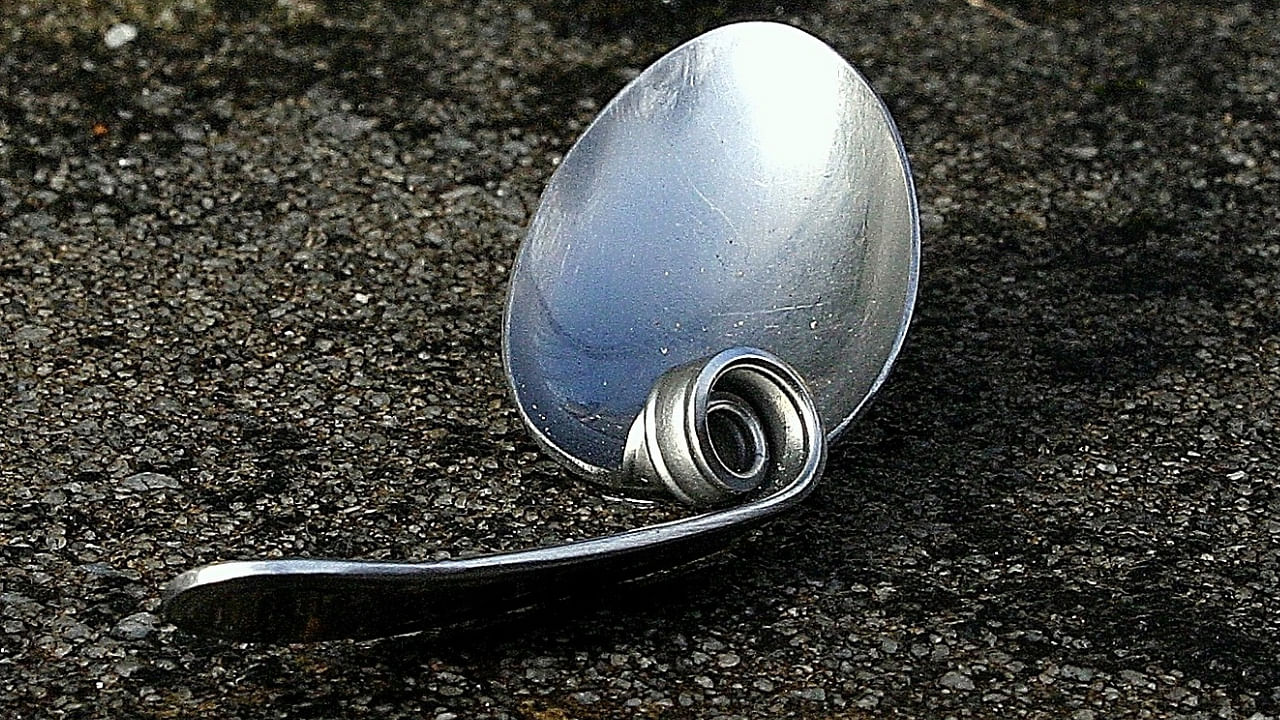
In the early 1970s, Uri Geller had been working the U.S. College Lecture circuit and participating in studies at California's Stanford Research Institute (SRI) that tested his supposed psychic abilities. But, on the evening of November 23, 1973, everything changed forever when his unique skills were broadcasted to a mass audience on the UK’s Dimbledy Talk-in Show.
Geller was an overnight sensation and the metal-bending era as we know it was born. He’d eventually appear on television screens and stages across the world for decades.
When he first burst onto the scene, people were convinced that Uri Geller truly had extrateresstial powers. Viewers of Geller’s metal bending demonstrations would even call into the television networks to report their own cutlery twisting. Audiences were starting to believe that maybe we all have the power to bend metal with our minds—and Geller wasn’t doing anything to stop it. These kinds of subtle "maybes” are what breed legends.
Some context is important. At the time, aliens and exterteresstials were a hot-button topic thanks to Erich Von Däniken best-selling novels, which were a welcomed escape from the Cold War that was raging on. The world was also just four years removed from the moon landing, a life-chaning experience that proved anything was possible.
Today, spoon-bending is typically showcased as part of a mentalism performance and not as a demonstration of any real psychic skill. Metal bending is one of the popular mentalism tricks in the world. And, while some of the best spoon bending methods like Morgan Strebler's “Liquid Metal” may look like real magic, they aren’t.
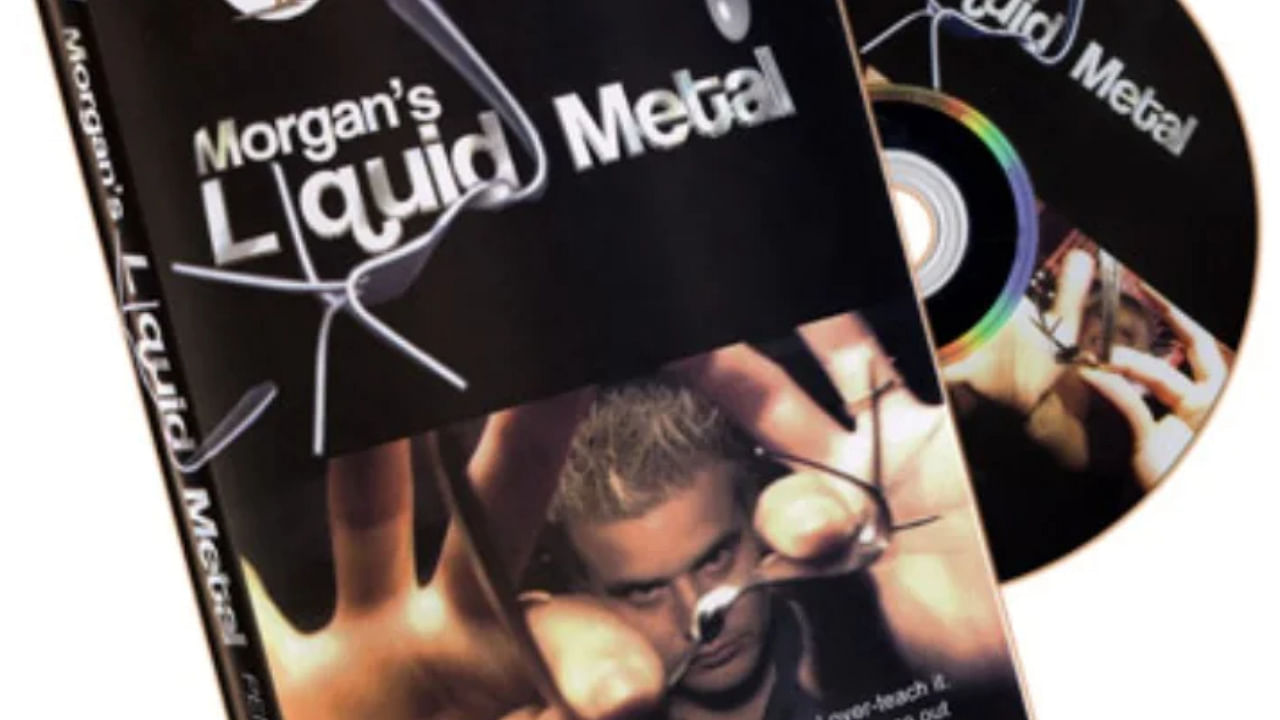
There is no proven way to bend spoons with your mind that doesn’t require some sort of magical secret. The same was true when Uri Geller was bending spoons on tv. Which is why it’s not shocking that one of the most infamous times Uri Geller failed on TV was during an appearance on The Tonight Show with Johnny Carson (Carson was one of many famous celebrities that were also magicians).
The reason Uri Geller was able to grow larger than simple magic tricks though was because of his commitment to authenticity. He would loosely pair mystery with scientific overtones, a technique that would soon be known as “Pseudoscience.”
Geller’s appearance on the Dimbledy Talk-in Show is a perfect example. Careful staging, and psychological screenplay added a layer of legitimacy. He was also flanked by two “scientific authority figures” that were there to "verify the legitimacy of the performance" for those at home. What the audience didn’t know at the time was that both were already avid believers in supernatural skills and had no real desire to debunk anything Geller was doing.
In simpler terms, The national broadcast was presented as a supernatural demonstration, not a magic performance. How many magic shows have you gone to that were being scrutinized by "scientists"? This exaggerated presentation angle played a huge role in convincing the audience that Uri Geller’s spoon bending was real.
Debunking Uri Geller
Of course, not everyone was president of the Uri Geller Fan Club. Some people, especially magicians, were angered by his deceptive coupling of magic tricks and science. None more vocal than Canadian magician James Randi who fought Geller's claims with vigor and flair until his death in 2020.
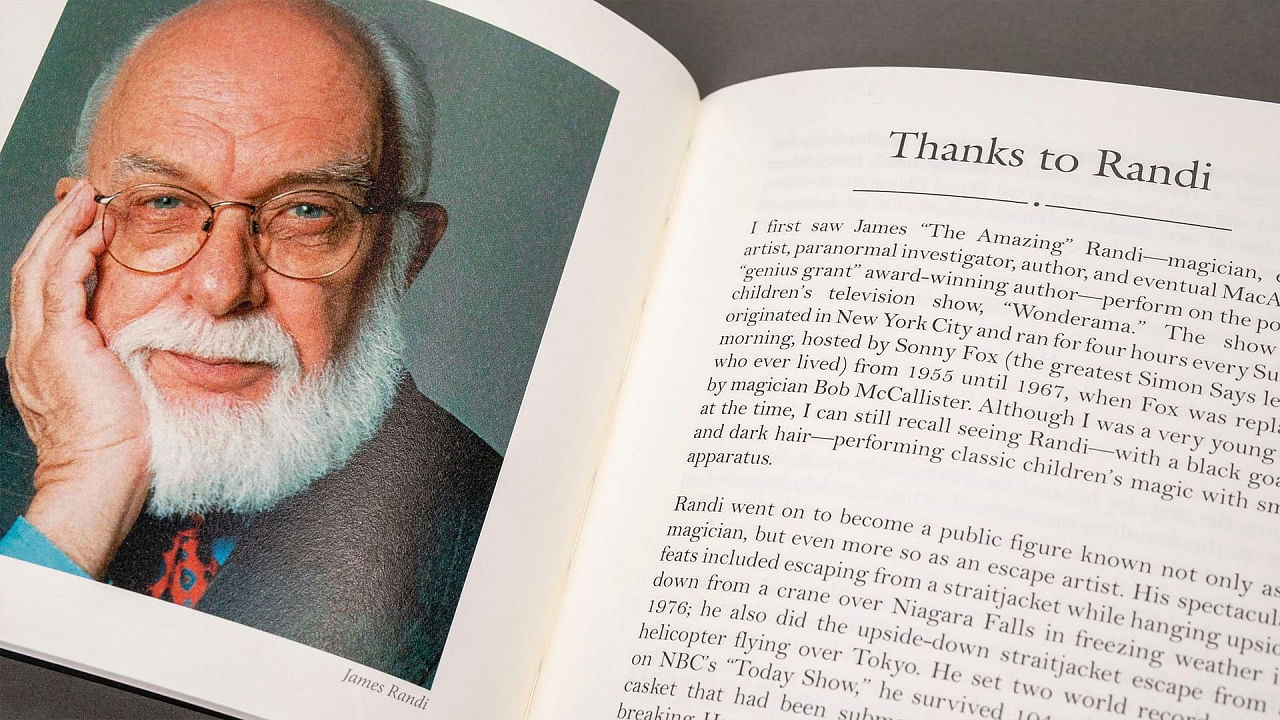
Born in 1928, James Randi’s career was inspired by Harry Houdini in two distinct ways: his love for escapology (resulting in two Guinness World Records), and his unwavering passion for scientifically questioning claims of the paranormal (Houdini spent the latter half of his life debunking spiritualists during the spiritualism revival of the early 20th century).
Geller and Randi’s first meeting happened in February 1973, nine months prior to Geller’s groundbreaking appearance on the Dimbledy Talk-in Show. The pair crossed paths in TIME Magazine’s New York City offices where Geller was being interviewed and offering demonstrations.
Randi had secretly teamed up with Popular Photography magazine's picture editor, and talented amateur magician, Charles Reynolds to spy on the metal-bender. The duo went undercover as a photographer and reporter to verify the claims they had heard about Geller with their own eyes.
Why the disguise? Well, psychics are actually well-known for refusing to perform in front of magicians or other scrutinizing skeptics. In the parlance of parapsychology, this is known as the "Negative Energy Gambit." Essentially, it’s a very convenient ruse that covers any possible mistakes by claiming that sometimes psychic powers don’t work on command, especially if there is a negative attitude present.
During their espionage, Randi and Reynolds were not shocked to discover their hypothesis was true. Uri Geller’s spoon bending was not real, and neither were any of his other psychic abilities. He was simply deceiving everyone with well-disguised easy magic tricks. Simple sleight of hand methods and age-old mind reading techniques like cold reading, paired with strong misdirection and intriguing presentations that were just believable enough, allowed Geller to convince everyone he had real supernatural abilities.
RELATED: Learn more about the lifelong mission of magicians to debunk fake psychics
Randi, already a staunch skeptic, was infuriated that scientific funding research was being wasted on pseudoscience. So, in 1976, combined with the talents and resources of Paul Kurtz, Marcello Truzzi, Martin Gardner, and Ray Hyman, he established the Committee for the Scientific Investigation of Claims of the Paranormal (CSICOP), now known as the Committee for Skeptical Inquiry (CSI).
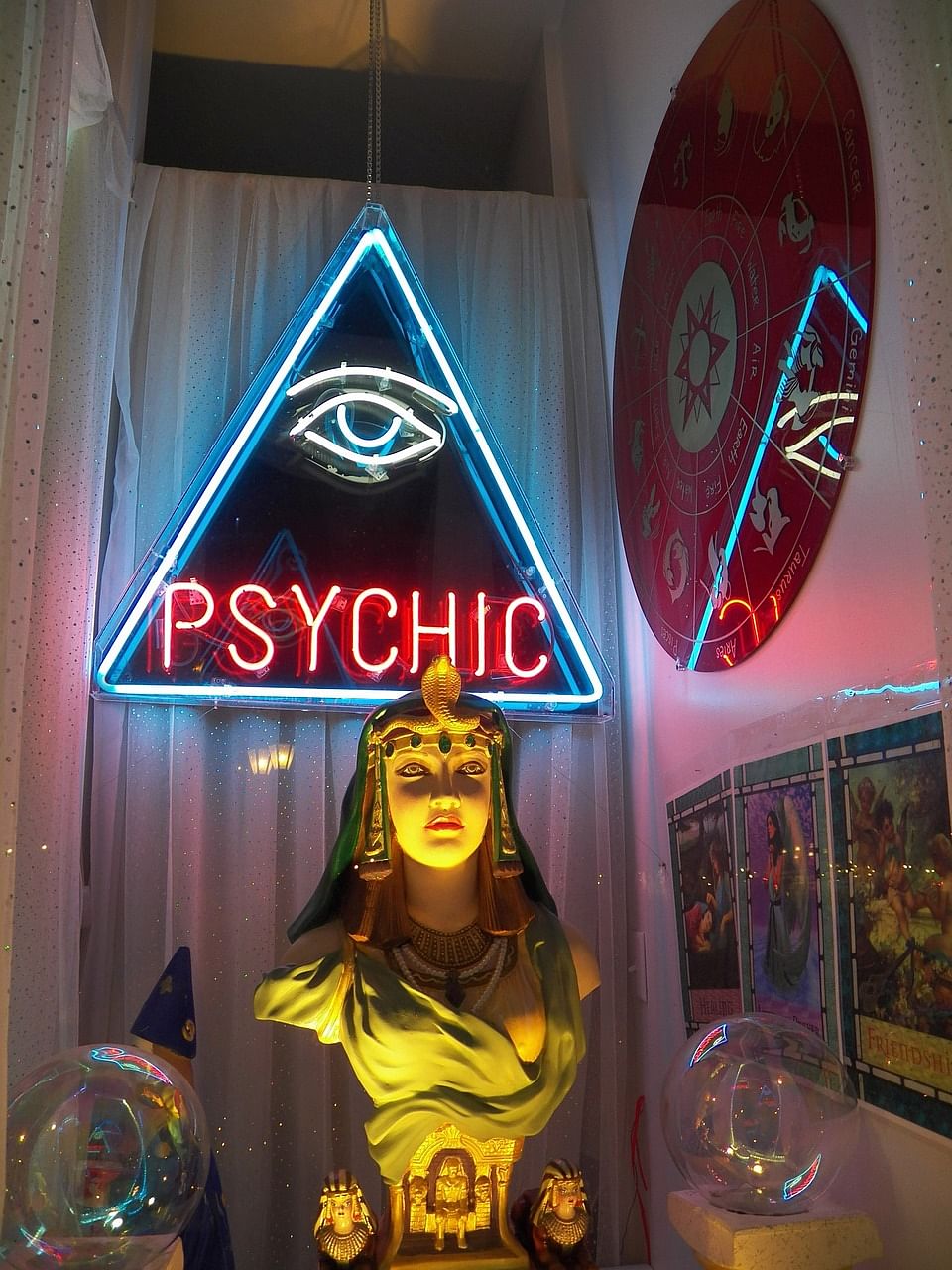
Two decades later, in 1996, the James Randi Education Foundation (JREF) was created along with the famous Million Dollar Paranormal Challenge. Anyone who can successfully demonstrate supernatural abilities under mutually agreed controlled conditions will win a $1 million prize.
This prize has never been claimed, most often due to an inability to come to an agreement on what the controlled conditions would be before the tests started (remember the "Negative Energy Gambit"?). Yet, this hasn’t stopped TV psychics from Miss Cleo (who was proven to be a psychic scam) to Celebrity Medium Tyler Henry and Long Island Medium Theresa Caputo from profiting on their fake psychic abilities and displays of pseudoscience.
No matter what side of the aisle you sit on though, one thing is inarguable. The impact of Uri Geller’s approach to psychic metal bending is unrivaled. It has permeated all aspects of our lives from books to movies, music, and art. The influence can still be felt today in modern-day performances of metal-bending.
Learn How to Bend Spoons
If you've ever wanted to learn how to bend spoons, there's no better place to start than Bend it Like Geller by Ben Harris.
This amazing book combines 50 years of mystical metal bending in one easy-reference book. This is the most comprehensive look at the metal bending genre ever.
You'll examine the classic methods for spoon bending and metal bending before diving into the evolution of modern techniques and use of gimmicks. Joined by some of the most famous mentalists in the world, Ben also takes a deep-dive into the psychology of metal bending and why it makes such a lasting impact.
Bend it Like Geller is a book every mentalist should read, or even any magician with an interest in learning mentalism tricks.
Buy Bend it Like Geller
Want to read a free excerpt from Bend it Like Geller? Get the Bend it Like Geller Free Sampler here.
Add Bend It Like Geller to cart (49.95$49.95)
Or, view more information
